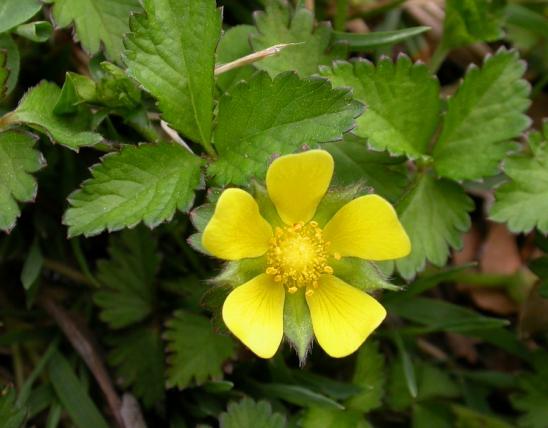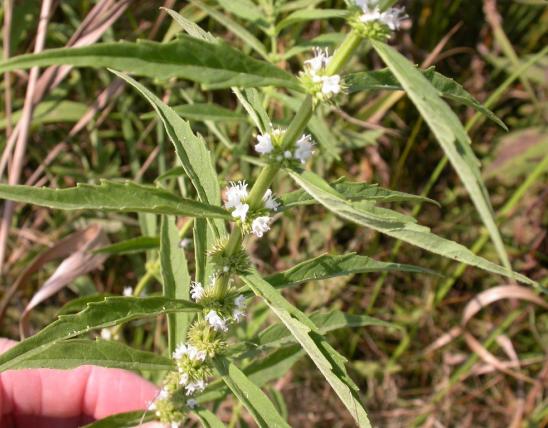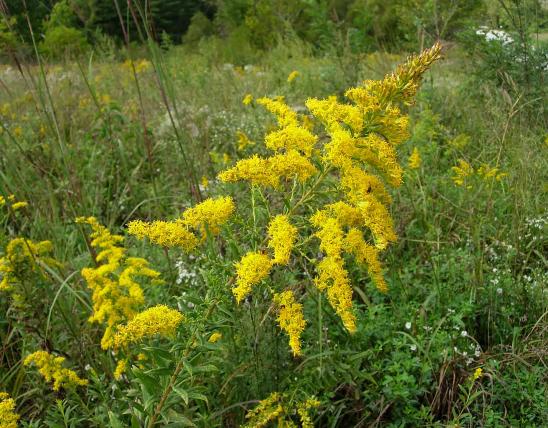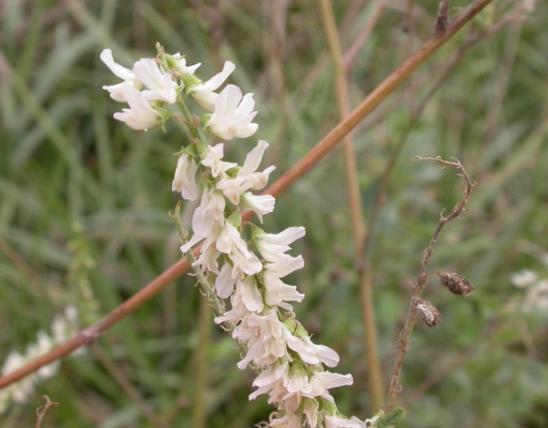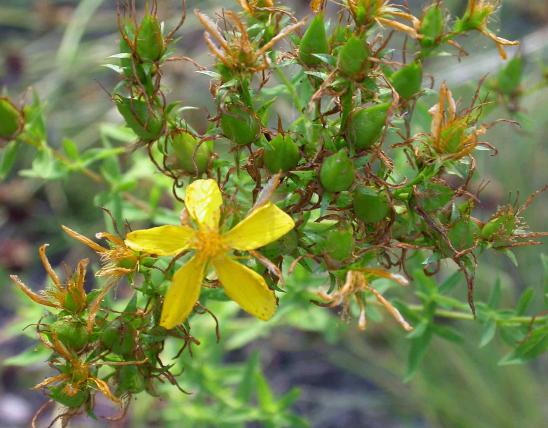Swamp agrimony is a native perennial wildflower with wandlike clusters of tiny yellow flowers atop its stout, upright, usually unbranched stems. The plant is hairy with glandular hairs. Where the leaves join the main stem, a pair of leafy, coarsely toothed stipules are fused, at least at their bases, to the leaf stalk.
Leaves are feather-compound with 11–23 opposite, narrow, sharply toothed, primary (large) leaflets, plus smaller leaflets between the primary ones. This combination of large and small leaflets is quite distinctive.
Flowers are tiny, about ¼ inch wide, with 5 yellow petals and 5–10 stamens. There are 2 pistils per flower. These arise nearly stalkless as an uncrowded spikelike raceme at the top of the stem (unopened flowers at the top, blooming flowers in the middle, and spent flowers and developing fruits at the bottom). Blooms July–August.
Fruits are about ⅛ inch long, conical, with a fringe of hooked bristles that adhere the fruits onto fur, feathers, or clothing.
Similar species: Three other species of Agrimonia have been recorded in Missouri. Swamp agrimony tends to have more and denser flowers than the others, and its primary leaflets are narrower. Also, it is the only one with 11–23 primary (larger) leaflets on the middle and lower leaves. The others have only 3–9 primary leaflets:
- Downy agrimony, or soft agrimony (A. pubsecens), is scattered to common nearly statewide, though apparently absent from parts of southeastern Missouri. Its lack of glandular hairs sets it apart: The flower stalk is densely hairy with short hairs and usually also long, spreading hairs, but it does not have a glandular texture. Also, the undersides of leaves are densely pubescent with velvety hairs and lack a glandular texture.
- Woodland agrimony (A. rostellata) is scattered nearly statewide, but absent from parts of northern Missouri. It is similar to downy agrimony, but if you inspect the undersides of the leaflets and the flower stalks, you will see that they are less hairy and have a glandular texture that downy agrimony lacks. Compared to tall agrimony, the hairs on the main flower stalk are shorter.
- Tall agrimony, or hooked agrimony (A. gryposepala), is uncommon, mostly in northern Missouri; it also has been found in Douglas County. It has larger fruits, to about ¼ inch long, and the long, spreading hairs of the main flowering stem are notably long, longer than the width of the stem where the hair is attached.
Height: usually 1–4 feet; sometimes to 6 feet.
Scattered statewide, but apparently absent from parts of northwestern and southeastern Missouri.
Habitat and Conservation
Occurs in bottomland forests, moist upland forests in ravines, banks of streams and spring branches, swamps, fens, bottomland prairies, and upland prairies. Also occurs on roadsides, ditches, margins of crop fields, and moist, disturbed areas.
Status
Native wildflower widespread in eastern North America. It may be declining in New England, in the northeastern portion of its range.
Human Connections
The genus name, Agrimonia, comes from a word that has long been used for plants in this genus and plants that resemble them. It has Latin and Greek roots. There are about 15 species in the genus, with about half in North America and half in Eurasia.
Worldwide, various species of agrimony have been used medicinally for a wide variety of digestive, liver, skin, blood, and other ailments. The usual preparation is as an herbal tea.
Overheard on a Missouri trail: “Good grief! What’s the purpose of sticktights . . . and ticks . . . and poison ivy?!” “It’s to keep annoying people like you out of the woods!” Burred and spiky fruits that stick on your clothes can indeed be annoying. But before the burs develop, the bright yellow little flowers — in truth, tiny roses — are quite cheerful.
Ecosystem Connections
The hooked bristles on the fruits are an adaptation for seed dispersal. Like other kinds of “sticktights” or “beggar’s lice,” the small fruits attach to the fur of animals or feathers of birds (or clothing of people) and get transported away from the parent plant. A wide dispersal means that at least some of the offspring may end up in hospitable habitats where they can thrive and start new colonies without competing against the parent plants. Having offspring in a variety of places means that if one community gets wiped out, others can continue the genetic line elsewhere.
A variety of bees and flies visit the small flowers of agrimony plants. Aphids suck the sap. Other insects chew the leaves, immature fruits, or flowers. Two moths that use agrimony as a larval food plant are so closely associated that they have “agimony” in their names: Anacampsis agrimoniella, a sooty-dark twirler moth with a prominent pale band stretched across both forewings, and Coptriche agrimoniella, a trumpet leafminer moth whose larvae eat the inner tissues of the leaflets, making tunnels as they go.
Grazing mammals apparently do not eat the bitter-tasting foliage.
Some types of birds (often cavity nesters) routinely add the fresh greenery of aromatic or medicinal-seeming plants to their nests, and swamp agrimony is one of the plants often chosen. Biologists hypothesize this might be an adaptation for reducing parasites or diseases that could afflict the nesting birds and their young, sort of like using aromatic cedar bedding for dogs with fleas.
A wide variety of plants have evolved the “sticktight” solution to facilitate seed dispersal:
- Cockleburs, bur marigolds, beggar ticks, Spanish needles, and others in the aster family;
- Tick trefoils (Desmodium spp.) in the bean family;
- Queen Anne’s lace (Daucus carota) in the carrot/parsley family;
- Cleavers (or bedstraw, Gallium spp.) in the madder family;
- Stickseeds and several other members of the borage family;
- Several members of the grass family have fruits like little barbed spears that push their way into animal fur
. . . and swamp agrimony, with its barbed fruits, is in the rose family. When unrelated species have independently evolved similar solutions to the same problem, biologists call it convergent evolution.
























